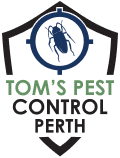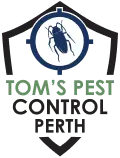Prompt, Affordable Same-Day Pest Control in Perth – From $129.
- Home
- Pest Treatments
- Termite Inspection & Treatment
- Ant Pest Control
- Bed Bug Treatment
- Beetle Pest Control
- Bird Control
- Borer Pest Control
- Cockroach Control
- Flea Control
- Fly Control
- Fox Trapping
- Mite Control
- Mosquito Pest Control
- Moth Control
- Possum Removal
- Silverfish Control
- Spider Control
- Wasp Control
- Rats And Mice Control
- End of Lease Pest Control
- Pest Management Perth
- General Pest Control
- Commercial Pest Control
- Office Pest Control
- Restaurants & Cafes Pest Control
- Hospitality Pest Control
- Education Facilities Pest Control
- Hospital & Aged Care Pest Control
- Pest Control Food Industry
- Factories & Warehouses Pest Control
- Government Buildings Pest Control
- Assets & Facilities Pest Management
- Farming and Agriculture Pest Control
- Strata Pest Control
- Construction Pest Control
- General Pest Control
- Termites
- Pest Info
- Pest Inspection
- Contact
- Home
- Pest Treatments
- Termite Inspection & Treatment
- Ant Pest Control
- Bed Bug Treatment
- Beetle Pest Control
- Bird Control
- Borer Pest Control
- Cockroach Control
- Flea Control
- Fly Control
- Fox Trapping
- Mite Control
- Mosquito Pest Control
- Moth Control
- Possum Removal
- Silverfish Control
- Spider Control
- Wasp Control
- Rats And Mice Control
- End of Lease Pest Control
- Pest Management Perth
- General Pest Control
- Commercial Pest Control
- Office Pest Control
- Restaurants & Cafes Pest Control
- Hospitality Pest Control
- Education Facilities Pest Control
- Hospital & Aged Care Pest Control
- Pest Control Food Industry
- Factories & Warehouses Pest Control
- Government Buildings Pest Control
- Assets & Facilities Pest Management
- Farming and Agriculture Pest Control
- Strata Pest Control
- Construction Pest Control
- General Pest Control
- Termites
- Pest Info
- Pest Inspection
- Contact
Dampwood Termites Control in Perth, Australia
(08) 6202 7096
Get A Free Quote Now!
Get A Free Quote Now!
Keep Your Home Safe from Dampwood Termites
Dampwood termites pose a serious danger to homes and businesses in Perth, as they thrive in moist environments and target damp or decaying wooden structures. Tom’s Pest Control in Perth understands the risks associated with these destructive pests and offers comprehensive solutions to protect properties from their damaging effects.
One of the primary concerns with dampwood termites is their ability to compromise the structural integrity of buildings. By weakening wooden support beams, flooring, and walls, these termites can result in costly repairs and maintenance for property owners. Additionally, dampwood termites can damage furniture, wooden fixtures, and valuable items, impacting both residential and commercial properties in Perth.
The presence of dampwood termites can also indicate underlying moisture issues within a building, such as leaks or poor ventilation. If left unaddressed, these problems can lead to further complications like mould growth and wood rot, posing additional threats to the safety and well-being of occupants.
Tom’s Termite Control in Perth recognises the importance of addressing dampwood termite infestations promptly and effectively. By offering tailored treatment plans and preventative measures, we help ensure a safe and pest-free environment for homes and businesses across Perth.
How to Spot Termites in Damp Wood?
To identify dampwood termites, there are a few things you can look out for. They are typically larger than other termite species, measuring between 1.27 and 1.59 cm. Their long, narrow, oval bodies have six legs and range in colour from white to brown.
There are three main types: soldiers with flattened brown heads and long, dark mandibles for defence; alates with dark brown bodies and four pairs of equal-sized wings; and cream-coloured nymphs with spotted patterns on their abdomen.
Termites are interesting insects that belong to the group Isoptera, meaning “two straight wings”. They live in well-structured colonies and eat cellulose. The stages of a termite’s life cycle consist of egg, nymph, and adult. The egg and nymph phases take approximately one month, while an adult termite may live for several years.
Winged termite mate and create new colonies by finding a good piece of wood to build their nest. The female termite can lay up to 30,000 eggs daily in a sticky substance. You can see the small, white eggs without any equipment.
Baby insects emerge from the hatching eggs with white bodies, antennae, and six legs. They shed their skin several times before growing bigger, showcasing excellent learning skills.
An individual’s type of termite will become is not predetermined, as it relies on a complex interplay of hormones and colony needs. Therefore, this process can be considered a combination of fate and free will.
Dampwood termites prefer living in damp, decaying wood, such as fallen logs and rotting stumps. They are not interested in dry wood or soil and tend to avoid them. Also, these termites are picky about where they live but can still cause significant damage to man-made structures. It’s important to stay alert for signs of infestation and act promptly to minimise damage. Taking early termite control action is critical.
Termites like to eat cellulose found in plants, but each type of termite has its preferences. For example, Dampwood termites prefer moist and decaying wood. However, they will eat other things with cellulose if they can’t find their favourite food. They may also attack wooden furniture. These insects eat other termites, especially those that are weak or injured. They are not picky eaters and will take advantage of opportunities.
Protection Against Dampwood Termites
To prevent dampwood termites from infesting your property, there are several preventative measures that you can take: –
- Keep your surroundings dry by ensuring proper ventilation and promptly addressing water damage or leaks. This will make your property less attractive to dampwood termites.
- Remove any wood debris from your premises, such as old tree stumps or firewood piles. This reduces the likelihood of termites establishing their colony by eliminating potential food sources.
- Conduct regular inspections to check for signs of termite damage, such as small holes in wood or piles of wood dust. Early detection of infestations allows for timely action to minimise the damage caused by these pests.
- Consider using treated wood when building or repairing wooden structures on your property. Treated wood has been treated with insecticide, which can deter dampwood termites from infesting the wood. This preventative measure can significantly reduce the chances of termites invading your property.
Behaviour Patterns
Dampwood termites can cause expensive harm to buildings, especially support beams. Detecting them early is challenging because they can remain hidden. So, it is crucial to be observant and act quickly. Look for signs of infestation to prevent costly structural damage.
Warning Signs of Termite Infestation
If you suspect a dampwood termite infestation, look out for discarded wings and piles of wood pellets or excrement that match the colour of the consumed wood. Prompt action is necessary to prevent further damage, and it’s best to contact a professional control service like Tom’s Pest Control Perth. DIY methods may not always be effective.
Termite Invasion Prevention
To protect your property from the harmful effects of dampwood termites and preserve your wooden furniture, it is essential to seek the help of a dependable termite extermination team. At Tom’s Pest Control Perth, our experienced professionals are well-versed in the dangers posed by these bothersome parasites.
We offer a range of dampwood termite control methods, including termiticide soil treatments, exclusion techniques like sealing or caulking entry points, and other preventive measures. However, fumigation may be necessary in severe cases to eliminate the infestation.
If you suspect these wood-destroying pests have invaded your property, don’t hesitate to contact our skilled professionals. They will thoroughly inspect and recommend treatments tailored to your specific needs.
With our expert assistance, you can effectively manage and prevent the further spread of these harmful termites. Trust us to protect your property from the damaging influence of dampwood termites.
Get Your Home Termite-Free Today - Contact Our Experts.
Protect your Perth property from termites by reaching out to us today. Our knowledgeable team is always available to answer any questions or concerns about termite control. Let us provide you with the essential information and support to safeguard your property from these damaging pests. Contact us now to insure your property stays termite-free.
Frequently Asked Questions
How quickly can termites damage a house?
Termites can cause damage to a house in as little as 3 years, but it can take up to 8eight years for the damage to become visible. The amount of damage caused depends on the size of the colony, with larger colonies causing more extensive damage. Homeowners should regularly inspect their homes for signs of termite activity, such as mud tubes or discarded wings, to catch any infestations early and minimise damage.
Are dampwood termites attracted to light?
Dampwood termites are not attracted to light but can be noticed swarming at night. They have three primary castes: reproductive, soldiers, and false workers. Unlike other termites, dampwood termites do not forage in soil. However, these termites can cause damage to damp or decaying wood and are primarily found in coastal regions. Therefore, it is vital to take preventive measures to avoid termite infestation and damage to wooden structures.
Will oil stop termites?
Wintergreen oil is an effective solution to kill termites without harming humans or pets. Unlike orange oil, which is commonly used, wintergreen oil has a higher flash point making it a safer option for heat treatments. Pest control professionals confirm the efficacy of wintergreen oil as a localised drywood termite treatment. Applying sump oil won’t stop termites; wintergreen oil can eliminate them.
Should you worry about dampwood termites?
While dampwood termites generally do not cause as much damage as drywood termites to man-made structures, they can still be a concern for homeowners. Dampwood termites have the potential to weaken support beams in houses by hollowing them out, leading to structural instability and the need for costly repairs. Therefore, it is important to take preventive measures and promptly address any signs of infestation to mitigate the risk posed by dampwood termites. Regular inspections and maintenance can help homeowners stay ahead of potential problems and ensure the integrity of their homes. If you suspect the presence of dampwood termites in your home or property, we strongly recommend reaching out to us for professional dampwood termite control services.
How do you identify dampwood termites?
Dampwood termites are commonly identified by their larger size compared to other termite species. They are typically dark brown in color and have elongated bodies with straight antennae. Additionally, their presence is often associated with moist and decaying wood, and they can leave behind distinctive fecal pellets that are larger and more irregularly shaped than those of other termites. If you suspect dampwood termite activity, it’s essential to seek professional termite inspection to confirm their presence and devise appropriate control measures.
 (08) 6202 7096
(08) 6202 7096


